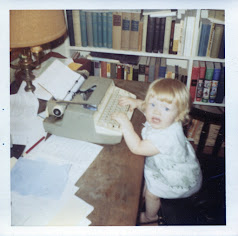-CC.jpg) |
| Olin Library, Wesleyan University 1952 |
In March 1945 both Swarthmore College and Brown University tried to persuade me to consider joining their respective administrative staffs as Treasurer. President Wriston of Brown was a member of Wesleyan's faculty when I was an undergraduate and I took one of his history courses. He was President of Lawrence College for 12 years before he became President of Brown. In addition to writing me many long letters, he telephoned me frequently, usually at breakfast time, trying to persuade me to come to Brown as treasurer. Finally I settled it by saying I was happy at Chicago where I was making good progress both as to salary and responsibilities. I gave the same answer to President Nelson of Swarthmore.
In late '48 or '49, Billy Calder, a banker, who was filling in as Wesleyan's Treasurer, wrote to ask whether I would be interested in moving to Wesleyan. I indicated some interest in looking into the position as Connecticut had always looked inviting compared to the flatness of Chicago. I had kept in touch with Wesleyan, somewhat, through the Chicago alumni club of which I was President and had visited the campus for class reunions, and the comparison with the University of Chicago made Wesleyan with its endowment of around $9 million, look rather small. And it was at this time that I had been promoted to Business Manager at Chicago.
After being visited by the Chairman of Wesleyan's Board of Trustees, talking with the Chairman of the board's Finance Committee while vacationing in New England and being visited by President Butterfield, finally Wesleyan's offer came. The title would be Vice President for Business Affairs and Treasurer, although at an initial salary slightly lower than Chicago's. We decided to make the change.
-CC.jpg) |
| 33 Lawn Avenue, Middletown - The Matthews new home |
My training and experiences at Chicago plus that of CPA provided an almost perfect background for the usual responsibilities of a college business officer, and my 7 years in public accounting with PMM & Co were invaluable in what was required in Wesleyan's purchase, operation and (15 years later) sale of that fine publisher of elementary and high school books and magazines, such as Current Events and My Weekly Reader, American Education Press, to the Xerox company for 400,000 shares of its common stock, worth at that time $56 million.
The net benefit to Wesleyan for the 15 years it owned and operated the Press, after taxes and all other editorial and operating expenses, was $32 million, but the sale over a period of years of the 400,000 shares of Xerox common stock, increased the total benefit to Wesleyan to more than $100 million.
During the 19 years of my tenure, the aforesaid plus gifts and legacies, such as the Davison bequest of $6.2 million and the Surdna (Andrus) Foundation gift of $8 million, plus gains of $29 million on sales of other investments, even after the appropriation of $36.6 million for physical plant improvement and expansion, increased Wesleyan's endowment to $150 million at book (cost) and $145 at market value as of June 30, 1969.
The prospect of these financial gains enabled Wesleyan, even as early as 1951, to initiate planning which resulted in the following:
- faculty salaries and related fringe benefits increased to the "AA" rating of the American Association of University Professors
- kept the student tuition fee to 30% of actual cost per undergraduate
- improved and added to the physical plant
The aforesaid required enormous amounts of my time in working with the Building and Grounds Committee of the Board, in the selection of architects, in the awarding of contracts and competitive bidding, in travel to New York City to confer with architects and the drawing of plans and actual construction proceeded, in weekly meetings with the architects on the site, etc.
Next time, we learn more about my grandfather's time at Wesleyan and how he still kept involved in important work in retirement.




No comments:
Post a Comment
If you don't wish to share your email address, please comment anonymously. Thank you.